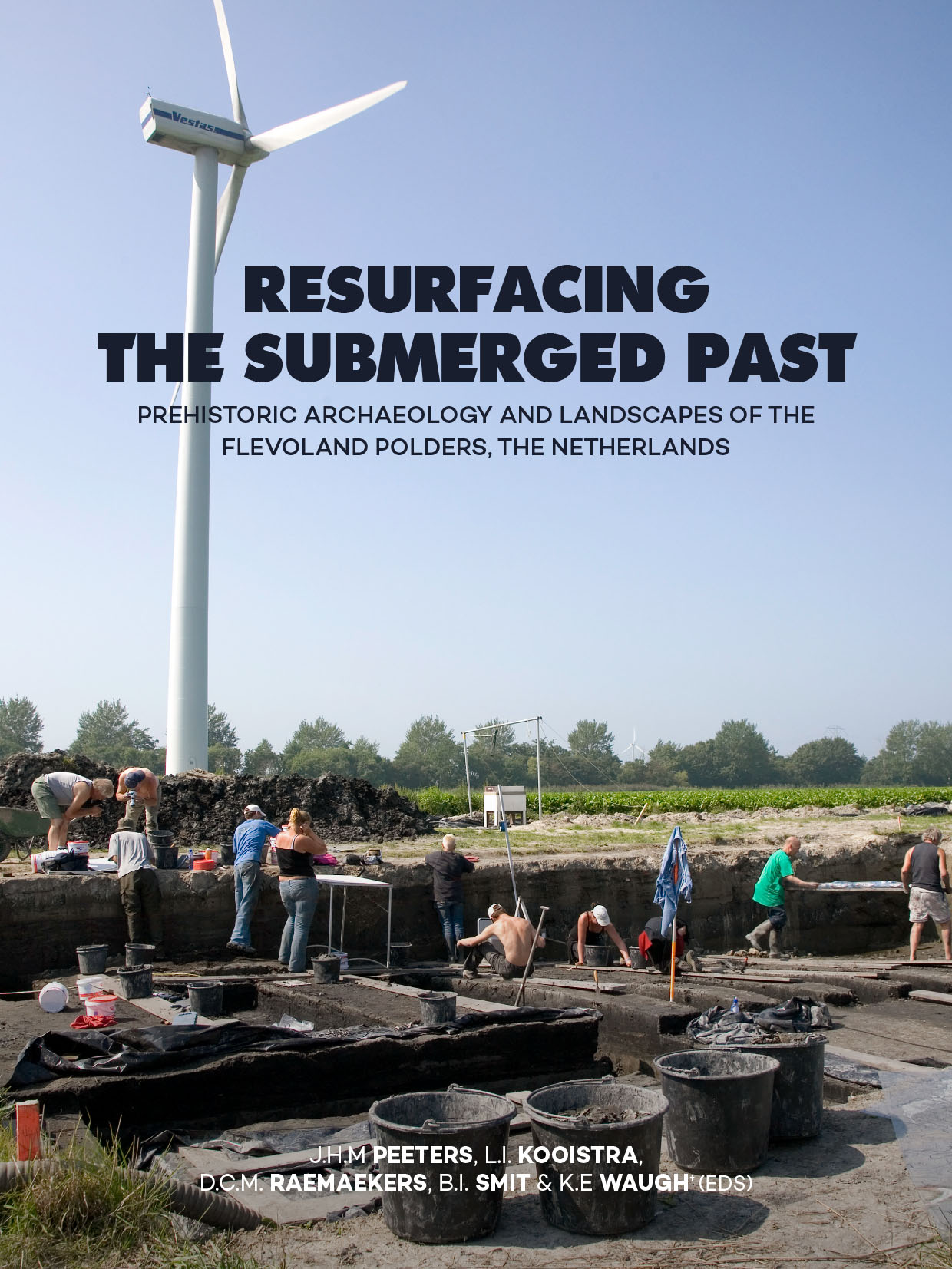Samenvatting
The Netherlands are internationally renowned for the archaeology of its wetland environments. The reclamation of the Flevoland Polders in the early half of the 20th century not only exposed hundreds of shipwrecks, but also remnants of prehistoric landscapes and traces of human occupation dating to Mesolithic and Neolithic times. Ultimately, this led to the ‘discovery’ of the Swifterbant Culture in the 1960s-1970s, and which was initially seen as a Dutch equivalent of the Ertebølle Culture. Archaeological investigations conducted by the University of Groningen, and later also the University of Amsterdam, delivered important new data on the nature of the Swifterbant Culture. It became key in the discussion about the adoption of crop cultivation and animal husbandry by hunter-gatherers living in wetland environments. Also, the Swifterbant Culture became central in the debate on the meaning of archaeologically defined ‘cultures’, questioning relationships between social interaction and material culture. With the increase of urbanisation and infrastructural works, alongside changes in the Dutch Monuments Act, dozens of small and large-scale development-led investigations got initiated at the turn of the century. One project involved the construction of the Hanzelijn railway, crossing one of the polders from West to East. Archaeologists became aware that much of what was known – and unknown – about the prehistoric past of the Flevoland Polders, was not easily accessible. It was therefore decided to bring together, as much as possible, all the information from the many scattered sources, and make it accessible to professionals, both inside and outside the Netherlands. The result is this book, which presents an overview of the most important sites and data, and what these learn us about the nature of the archaeological record, landscape change, prehistoric subsistence, ritual behaviour, as well as socio-cultural developments during the Mesolithic and Neolithic. Previously considered an impossibility, ‘fossilised’ fields, discovered at Swifterbant, demonstrate crop cultivation in wetland environments in an early stage of the Neolithic. In fact, the prehistory of the Flevoland Polders is tightly connected to the dynamic nature of the extended wetlands that characterised the landscape since the end of the last glacial. Although often regarded as the ‘margin’ of cultural dynamics in the past, we can now see that the Flevoland Polders were right in the centre of fundamental long-term changes in human existence in NW Europe.
Inhoudsopgave
Chapter 1 Introduction of the Hanzelijn Archaeological Project (K. E. Waugh (Ɨ), W. Hessing & J. Flamman) 1.1 Organisation 1.2 The archaeological project 1.3 Knowledge Development Program Archaeology Hanzelijn 2012-2020 1.4 Some retrospective remarks Chapter 2 The cradle of the Swifterbant culture: 50 years of archaeological investigations in the province of Flevoland (D.C.M Raemaekers & J.H.M. Peeters) 2.1 Introduction 2.2 History of the polders 2.3 Research traditions in the polder 2.4 Research topics and approaches 2.5 The positioning of the Swifterbant Culture 2.6 Archaeology and the public 2.7 Conclusions Chapter 3 Hidden landscapes: mapping and evaluating deeply buried remains of human activity (J.H.M. Peeters & B.I. Smit) 3.1 Introduction 3.2 Climate, sea level rise and the structure of the subsurface 3.3 The character and quality of archaeological remains 3.4 Mapping hidden landscape units 3.5 The identification of sites: on statistics and indicators 3.6 Excavations: windows on the past 3.7 Conclusions Chapter 4 Exploiting a changing landscape: subsistence, habitation and skills (J.H.M. Peeters, T. ten Anscher, L.I. Kooistra, L. Kubiak-Martens & J. Zeiler) 4.1 Introduction 4.2 Taphonomy and analysis: the representativeness and interpretive value of find assemblages 4.3 Wild and domesticated mammals as sources of food 4.4 Fishing in a drowning landscape 4.5 Birds in the diet 4.6 Plant resources in the food economy 4.7 Food preparation and consumption 4.8 Resources and technology 4.9 Habitation patterns 4.10 Conclusions Chapter 5 People, ritual and meaning (D.C.M Raemaekers) 5.1 Introduction 5.2 Burial practice 5.3 Other cultural practices with human bones 5.4 Depositions 5.5 Materiality 5.6 Conclusions Chapter 6 From land to water: geomorphological, hydrological and ecological developments in Flevoland from the Late Glacial to the end of the Subboreal (L.I. Kooistra & J.H.M. Peeters ) 6.1 Introduction 6.2 Study of the history of the Flevoland landscape in broad outline 6.3 Landscape dynamics in Flevoland 6.4 A new view of the landscape 6.5 Three windows of observation 6.6 Conclusions Chapter 7 Transformations in a forager and farmer landscape: a cultural biography of prehistoric Flevoland (J.H.M. Peeters, L.I. Kooistra & D.C.M. Raemaekers) 7.1 Introduction 7.2 The landscape as a source of subsistence 7.3 Cultural structuration of the environment 7.4 Socio-cultural cohesion 7.5 Conclusions Site Atlas: Windows of observation: the quality, nature and context of excavated sites in Flevoland (T.Hamburg & B.I. Smit) I.1Introduction I.2 Zuidelijke Flevoland I.2.1 Almere – Hoge Vaart/A27 I.2.2 Almere – Europakwartier site 7 I.2.3 Almere – Zwaanpad I.2.4 Zeewolde – Oz35/Oz36 I.3 Oostelijk Flevoland I.3.1 Dronten N23/N307 – site 5 I.3.2 Hanzelijn – Area VIII I.3.3 Hanzelijn – Tunnel Drontermeer (area XVI) I.3.4 Swifterbantcluster I.4 Noordoostpolder I.4.1 Emmeloord J97 I.4.2 Schokkerhaven – E170 I.4.3 Schokland P14 I.4.4 Urk – E4 Bibliography




